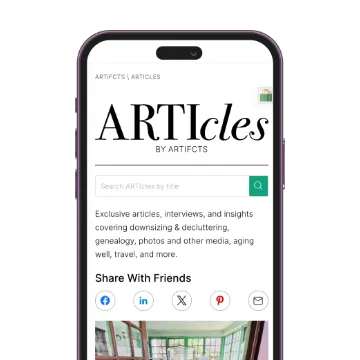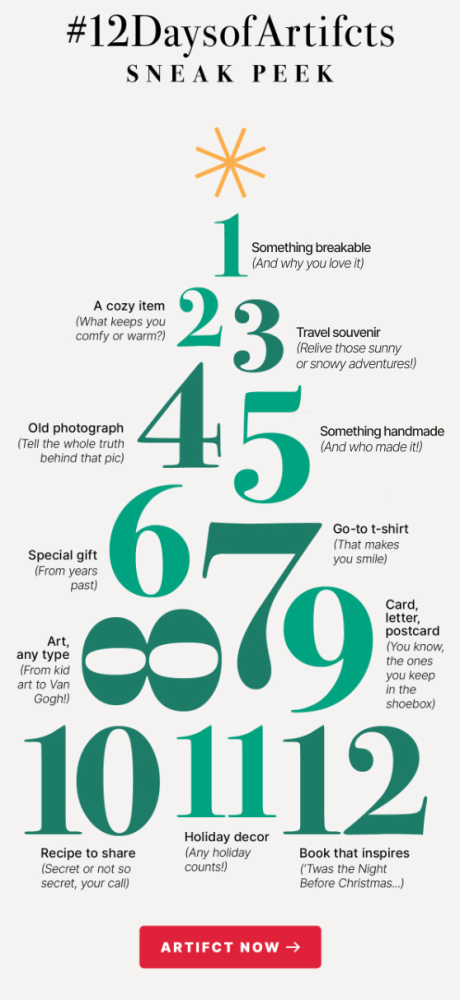Dear Artifcts Members,
As we step into a brand-new year, I want to pause and say thank you. Artifcts exists because of you—your stories, your trust, and your belief that the memories behind our things matter just as much as the things themselves. As we reflect on 2025, I’m filled with gratitude and pride for what we’ve built together.
This past year was one of meaningful growth and exciting milestones. We partnered with Clutter Cleaner to help families facing downsizing and life transitions preserve what truly matters—the stories and significance behind their belongings. This collaboration reinforced our shared belief that letting go of things doesn’t mean letting go of memories.
We were also honored to be named one of Family Tree Magazine’s Top Genealogy Tech Websites for the third year in a row. This recognition reflects our continued commitment to supporting families, historians, and everyday memory-keepers with thoughtful, accessible technology.
In 2025, I also had the opportunity to join the Northern Trust “Secrets of Enterprising Families” podcast, where we talked openly about legacy, loss, and practical estate planning. These conversations are at the heart of why Artifcts exists—to make space for reflection, clarity, and connection across generations.
On the product side, we reached a major milestone with the launch of ARTIAssist, our first AI-backed feature. ARTIAssist was designed to make creating Artifcts easier and more intuitive, helping members capture historical and factual details behind their most cherished keepsakes. This was a big step forward for us, and we’re just getting started.
None of this would be possible without your continued support, feedback, and enthusiasm. You inspire us every day.
Looking ahead to 2026, we’re excited about what’s to come:
- Continued refinement of ARTIAssist and other AI-powered tools to help you create new Artifcts with confidence and ease
- Virtual workshops designed to help you get the most out of every Artifcts feature
- And a growing team, bringing new ideas, energy, and expertise to better serve our community
Thank you for being part of the Artifcts family and for trusting us with your stories. Here’s to a new year filled with reflection, discovery, and connection—and to preserving what matters most, together.
With gratitude and warm wishes for the year ahead,

Co-Founder & CEO, Artifcts
Happy New Year ✨











 The first four days of our 12 Days of Artifcts challenge. Objects with stories, your stories!
The first four days of our 12 Days of Artifcts challenge. Objects with stories, your stories!



